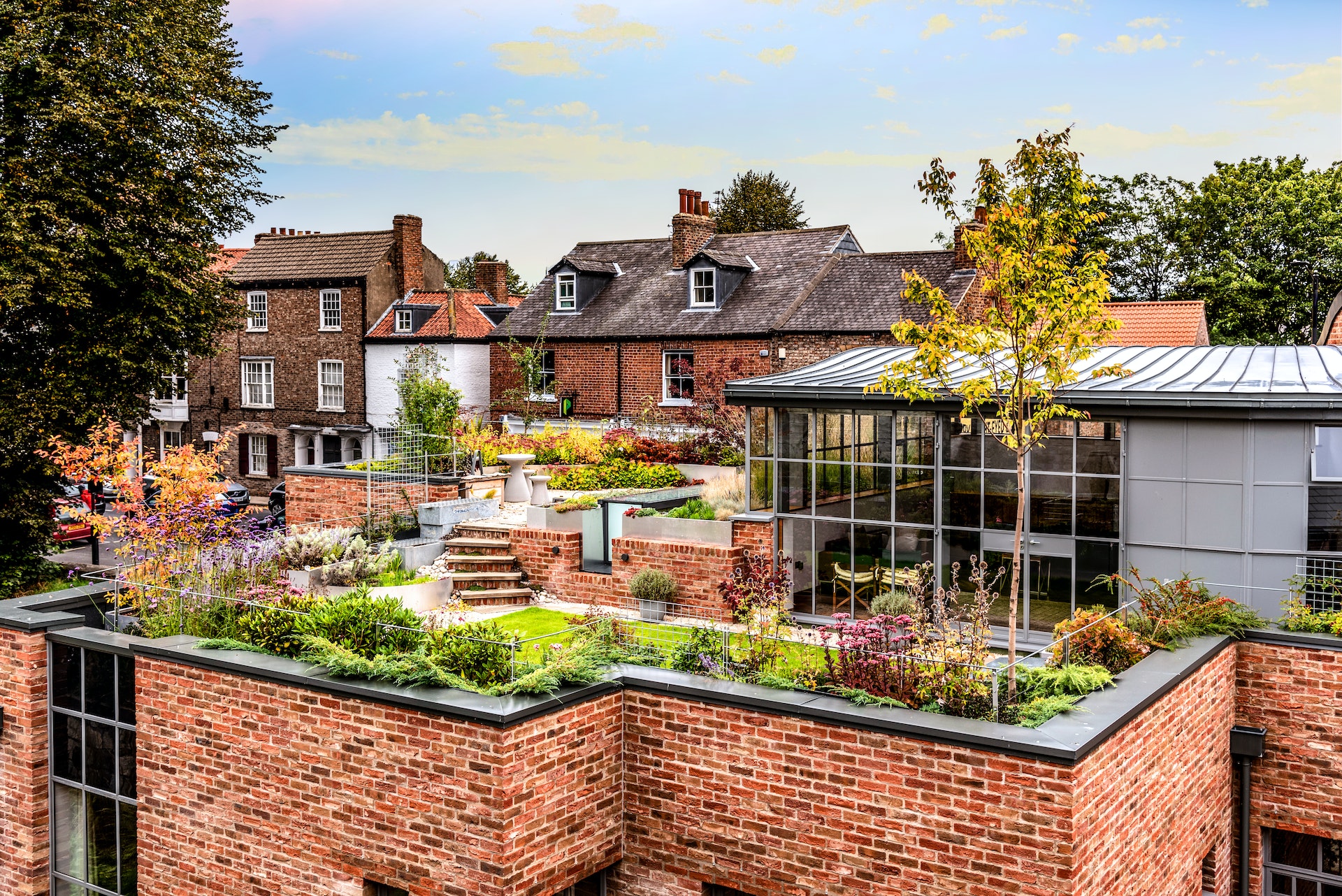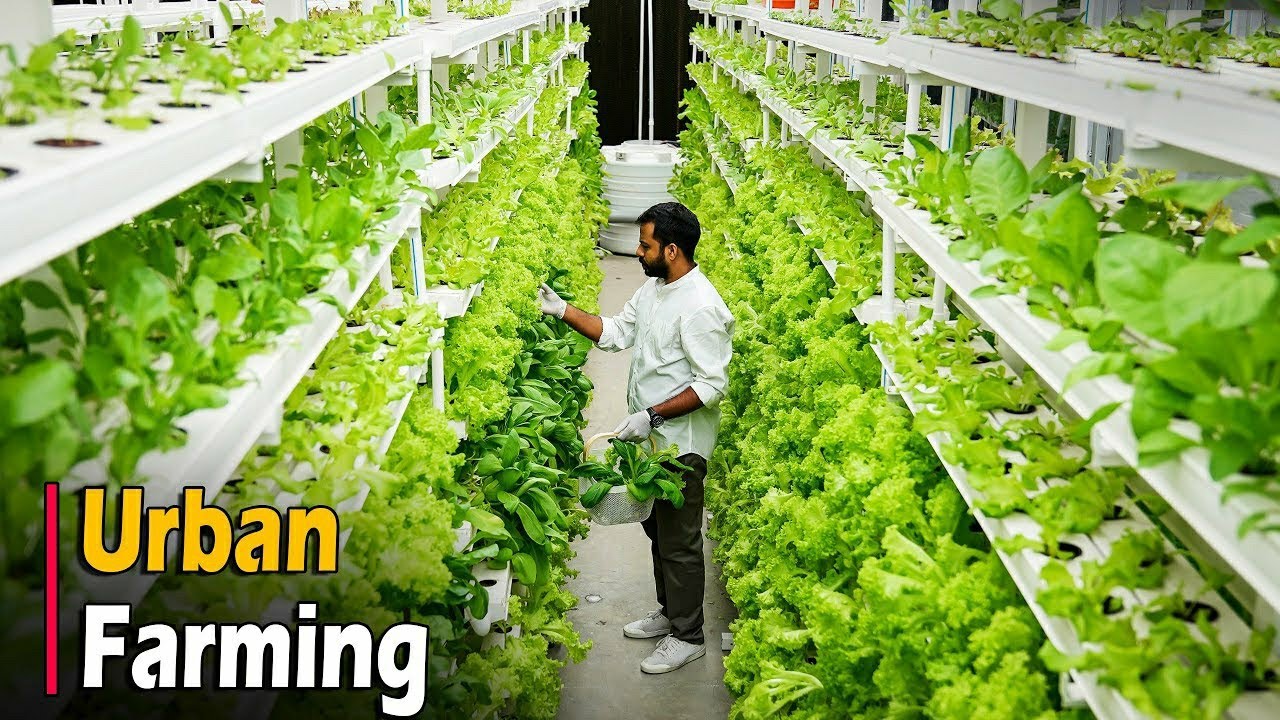Urban Agriculture - A Sustainable Solution To Food Insecurity In Cities
Urban agriculture involves the cultivation of crops and raising of livestock in urban and suburban areas, often using creative methods such as rooftop gardens, vertical farming, and aquaponics.
Author:George EvansMar 19, 2025292 Shares291.6K Views

Urban agricultureis a rapidly growing trend in cities around the world, as communities seek to improve access to fresh, healthy food, promote sustainability, and enhance community engagement.
Urban agriculture involves the cultivation of crops and raising of livestock in urban and suburban areas, often using creative methods such as rooftop gardens, vertical farming, and aquaponics.
With the global population becoming increasingly urbanized, urban agriculture offers a promising solution to the challenges of food insecurity, climate change, and urbanization.
By integrating food production into the fabric of the city, urban agriculture can help to create more resilient and sustainable communities, while also promoting social, economic, and environmental benefits.
What Is Urban Agriculture?
Urban agriculture refers to the practice of growing, processing, and distributing food in or around urban areas.
It includes a range of practices, from small-scale community gardens to large-scale commercial farms, and can take place in various settings such as vacant lots, rooftops, and indoor spaces.
Urban agriculture is a response to the challenges of feeding growing urban populations, improving food security, and promoting environmental sustainability in cities.
It offers a range of benefits, such as increasing access to fresh, healthy food, reducing food waste, and enhancing community engagement.
Urban agriculture seeks to maximize food production in limited urban spaces. This often involves innovative approaches to growing edible plants, and even some unexpected ones.
For example, considering a variety of rose varietiescan introduce a new dimension to urban gardens, contributing to plant diversity and potentially attracting pollinators. This highlights the potential for diverse and creative solutions in urban food production.

Urban Farming - Urban Agriculture
Types Of Urban Agriculture
Urban agriculture can take on different forms and approaches, depending on the location, available space, and resources. Here are some common types of urban agriculture:
Community Gardens
These are shared spaces where members of a community can grow fruits, vegetables, and herbs. They are usually run by volunteers and may be located on vacant lots, rooftops, or public parks.
Rooftop Gardens
These are gardens that are built on rooftops of buildings, which can be used for growing crops, herbs, and even small trees. Rooftop gardens are popular in urban areas where land is scarce.
Vertical Farming
This is a method of growing crops in vertically stacked layers, using artificial lighting and a controlled environment. This type of farming is becoming increasingly popular in urban areas where space is limited.
Aquaponics
This is a system that combines aquaculture (fish farming) with hydroponics (growing plants in water). The waste produced by the fish provides nutrients for the plants, and the plants in turn purify the water for the fish.
Commercial Urban Farming
This is large-scale agriculture that is done for profit in urban areas. These farms can produce a variety of crops and are often located on the outskirts of cities, where land is cheaper and more abundant.
Benefits Of Urban Agriculture
Urban agriculture has a range of benefits for individuals, communities, and the environment. Here are some of the key benefits of urban agriculture:
Health Benefits
Urban agriculture can increase access to fresh, healthy food, which can improve overall health and reduce the risk of chronic diseases.
Studies have shown that people who participate in community gardens or have access to fresh produce are more likely to consume fruits and vegetables.
Environmental Benefits
Urban agriculture can contribute to the sustainability of cities by reducing the carbon footprint of food production and distribution.
It can also help to reduce food waste by providing a local source of fresh produce, and can increase biodiversity by providing habitat for pollinators and other beneficial insects.
Economic Benefits
Urban agriculture can create jobs and stimulate local economies, particularly in low-income communities.
It can also provide opportunities for entrepreneurship and small business development, such as selling produce at farmers markets or starting a community-supported agriculture program.
Social Benefits
Urban agriculture can bring communities together by providing a shared space for gardening and socializing. It can also improve community pride and identity, and enhance social cohesion and trust.
Overall, urban agriculture can play an important role in promoting food security, reducing food deserts, and building more sustainable and resilient communities.
It offers a range of benefits that can improve the quality of life for individuals and communities, while also contributing to a more sustainable and just food system.
Challenges Of Urban Agriculture
Urban agriculture also faces several challenges, which can vary depending on the location, scale, and type of agriculture. Here are some common challenges of urban agriculture:
Limited Space
Urban agriculture often faces the challenge of limited space, particularly in densely populated areas. Finding suitable land for farming or gardening can be difficult, and rooftop or vertical farming may not be feasible for all buildings.
Soil Contamination
Soil in urban areas can be contaminated with heavy metals and other pollutants, which can pose health risks to both crops and humans. Soil testing and remediation can be costly and time-consuming.
Water Availability
Urban agriculture requires a reliable source of water, which may be limited in urban areas. Access to water may be further constrained by drought or competing demands for water.
Policy And Regulatory Barriers
Urban agriculture may face legal and regulatory barriers, such as zoning restrictions, land use regulations, and health and safety codes. These barriers can make it difficult to start or maintain urban agriculture projects.
Financial Viability
Urban agriculture may not be financially viable, particularly for small-scale projects. The cost of land, equipment, and supplies can be high, and the revenue generated from selling produce may not cover these costs.
Despite these challenges, urban agriculture continues to grow in popularity and is increasingly recognized as an important component of a sustainable and resilient food system.
Addressing these challenges requires innovative solutions and partnerships between communities, governments, and businesses.
Successful Examples Of Urban Agriculture
Urban agriculture has been successfully implemented in many cities around the world, providing a range of benefits to local communities. Here are some successful examples of urban agriculture:
- Brooklyn Grange, New York- Brooklyn Grange is a rooftop farming company that operates two commercial rooftop farms in Brooklyn, New York. The farms produce over 50,000 pounds of organic produce annually and supply local restaurants, grocery stores, and farmers markets.
- Growing Power, Milwaukee- Growing Power is a non-profit organization that operates a 2-acre urban farm in Milwaukee, Wisconsin. The farm provides fresh produce for local residents and also offers educational programs on sustainable agriculture and food systems.
- The City Farm, Chicago- The City Farm is an urban agriculture project in Chicago that operates a ½ acre farm in the heart of the city. The farm provides fresh produce to local restaurants and farmers markets, and also offers educational programs for urban residents.
- Singapore’s Rooftop Farming- Singapore, a city-state with limited land area, has embraced rooftop farming as a way to increase food production and promote sustainable living. The city has several rooftop farms, including the largest rooftop farm in Asia, which produces over 20 tons of vegetables annually.
- The Vertical Farm Project, Chicago- The Vertical Farm Project is an indoor farming initiative in Chicago that uses hydroponic technology to grow fresh produce year-round. The project is housed in a former meatpacking plant and provides fresh produce to local residents and restaurants.
These successful examples of urban agriculture demonstrate the potential for sustainable food production in urban areas, while also promoting economic development and community building.
People Also Ask
What Are The Challenges Of Implementing Urban Agriculture In Cities?
One of the main challenges of implementing urban agriculture is the limited availability of land in urban areas. This can make it difficult to find suitable spaces for gardening or farming, especially in densely populated areas.
Additionally, urban agriculture may face regulatory challenges, such as zoning restrictions or permits required for livestock or large-scale farming operations.
Another challenge is the potential for soil contamination in urban areas, which may require soil remediation or the use of raised garden beds.
How Does Urban Agriculture Benefit The Environment?
Urban agriculture has a number of environmental benefits, such as reducing the carbon footprint of food production by reducing transportation emissions and decreasing the need for chemical fertilizers and pesticides.
Additionally, urban agriculture can help to increase green space in cities, reduce stormwater runoff, and mitigate the urban heat island effect.
By promoting biodiversity and creating habitats for pollinators and other wildlife, urban agriculture can also help to support urban ecosystems.
How Can Urban Agriculture Help To Address Food Insecurity In Cities?
Urban agriculture can help to address food insecurity in cities by providing fresh, healthy, and locally produced food for residents.
By increasing access to affordable food, especially in food deserts or areas with limited access to grocery stores, urban agriculture can help to improve food security and reduce the incidence of diet-related diseases.
Moreover, by creating opportunities for community engagement and education, urban agriculture can help to build a more resilient and self-reliant food system.
What Are Some Examples Of Successful Urban Agriculture Projects?
There are many successful examples of urban agriculture projects around the world, ranging from small-scale community gardens to large-scale commercial farms.
For example, in Detroit, the urban agriculture movement has helped to transform vacant lots and abandoned buildings into thriving farms and gardens.
In Singapore, the government has launched a program to encourage rooftop gardening and urban farming, which has led to the creation of hundreds of community gardens and green spaces. Other successful examples can be found in cities such as New York, Chicago, and London.
What Are The Economic Benefits Of Urban Agriculture?
Urban agriculture has a number of economic benefits, such as creating new job opportunities in areas such as farming, food processing, and distribution.
Additionally, urban agriculture can help to revitalize vacant or underutilized land, which can increase property values and stimulate economic development in surrounding areas.
By promoting local food production and reducing dependence on imported food, urban agriculture can also help to support local economies and reduce food waste.
Final Words
Urban agriculture is a growing movement that offers a range of benefits for urban communities. By promoting access to fresh, healthy food, reducing food waste, and enhancing community engagement, urban agriculture can help to improve the health and well-being of city residents.
Moreover, urban agriculture can promote environmental sustainability by reducing the carbon footprint of food production and increasing green space in cities.
As more and more cities embrace urban agriculture, we can expect to see new innovations in farming technology and community engagement, as well as increased access to fresh, locally produced food for all.
With its potential to create more resilient and sustainable communities, urban agriculture is an important part of the future of urban living.

George Evans
Author
George Anderson, an exceptional architectural designer, envisions and brings to life structures that transcend the realm of imagination. With an unwavering passion for design and an innate eye for detail, George seamlessly blends form and function, creating immersive spaces that inspire awe.
Driven by a deep appreciation for the interplay of space, light, and materials, George's innovative approach redefines the possibilities of architectural design. His visionary compositions leave an indelible mark, evoking a sense of wonder and transforming the built environment.
George Anderson's transformative designs and unwavering dedication continue to shape the architectural landscape, pushing the boundaries of what is possible and inspiring generations to come.
Latest Articles
Popular Articles